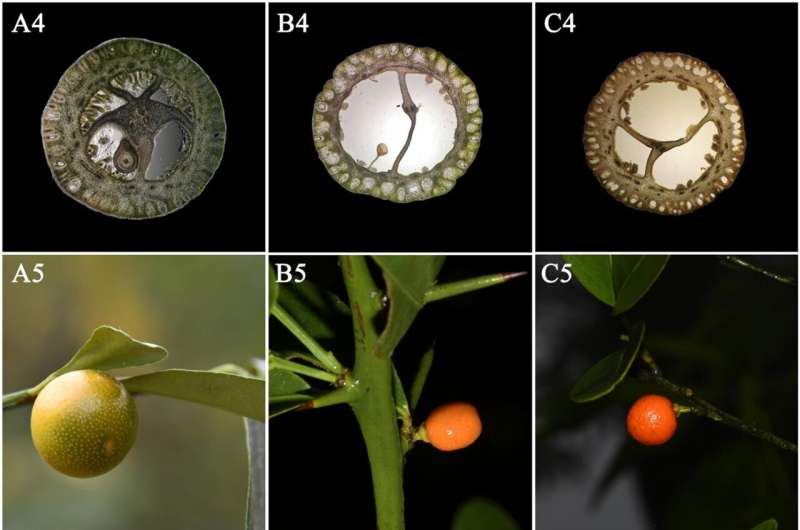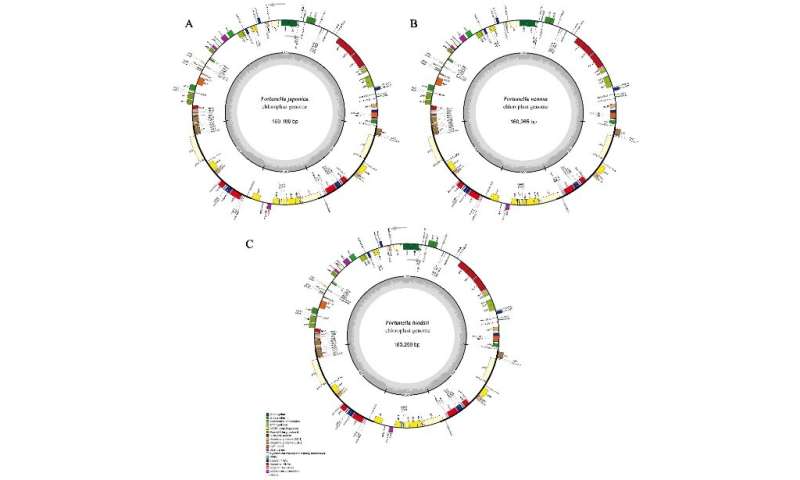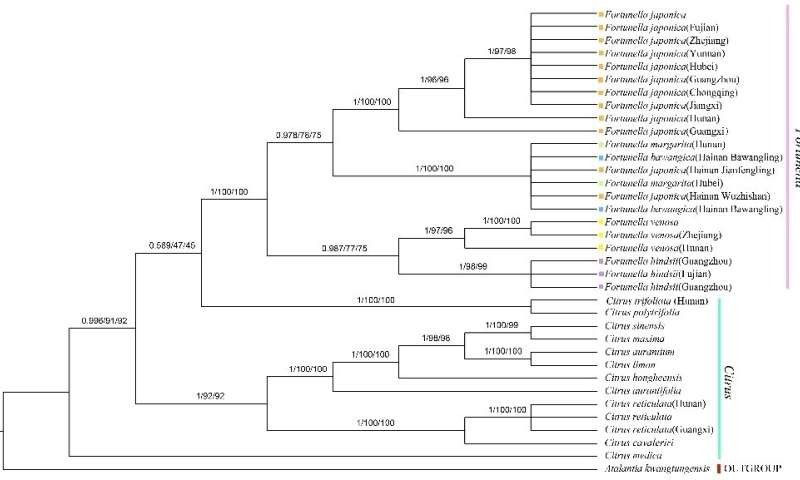Researchers untangle the taxonomic status of Fortunella

Fortunella Swingle (Rutaceae) is an evergreen shrub or small tree distributed in Southeast Asia. China has the most abundant distribution of this genus, and all species are concentrated in China. The genus is a unique fruit resource in China, and almost all species are rare and endangered wild plants, so the conservation and classification of its resources have been concerned. Due to the lack of understanding of its main taxonomic characteristics and different understanding of species scale, there has been a long dispute on its systematic status and taxonomy.
In order to clarify the systematic status of Fortunella and the taxonomic relationship of the genus, the East African Flora and Taxonomy Group from the Wuhan Botanical Garden of the Chinese Academy of Sciences, cooperating with researchers from Hunan Normal University and the Rural Workstation of Hunan Eco-environment, carried out a large number of field investigations in China for Fortunella plants, and the first-hand detailed and accurate morphological data of the genus were obtained. The pollen characteristics were observed by scanning electron microscope, and the pollen micromorphological data of Fortunella were obtained.
The researchers have sampled extensively throughout the country, constructed the phylogenetic relationship of the genus by using the chloroplast genome and ITS fragments, confirmed the key characteristics of the classification of Fortunella, revised the classification of Fortunella, and solved the problems of the system status and subgenus classification of Fortunella.
According to the morphological, palynological, and molecular biological evidences, Fortunella and Citrus are closely related, and there are overlaps in morphology and palynological and molecular biological characteristics.
-

Gene map of Fortunella chloroplast genome. Credit: WANG Ting -

Phylogenetic analysis of Fortunella and related taxa. Credit: WANG Ting
This study supports the inclusion of Fortunella into Citrus. The morphological and palynological characteristics of F. venosa, F. hindsii, and F. japonica are different, and the three species should be considered as independent species. F. swinglei, F. margarita, F. bawangica, and several hybrids have no essential differences from Fortunella and are treated as synonyms of the latter respectively.
In this study, F. venosa and F. hindsii were transferred to Citrus as independent species, and new combined names for these two species were proposed. Their species names still use the previous species epithets: (1) Citrus venosa (Champ. ex Benth.) K.M. Liu, X.Z. Cai & G.W. Hu, comb. nov. (2) Citrus hindsii (Champ. ex Benth.) K.M. Liu, G.W. Hu & X.Z. Cai, comb. nov.
Citrus japonica Thunb. was originally placed in the genus Citrus when it was first named by Thunberg in 1780, and its scientific name should be restored.
The research was published in Frontiers in Plant Science.
More information: Ting Wang et al, Fortunella venosa (Champ. ex Benth.) C. C. Huang and F. hindsii (Champ. ex Benth.) Swingle as Independent Species: Evidence From Morphology and Molecular Systematics and Taxonomic Revision of Fortunella (Rutaceae), Frontiers in Plant Science (2022). DOI: 10.3389/fpls.2022.867659
Journal information: Frontiers in Plant Science
Provided by Chinese Academy of Sciences





















